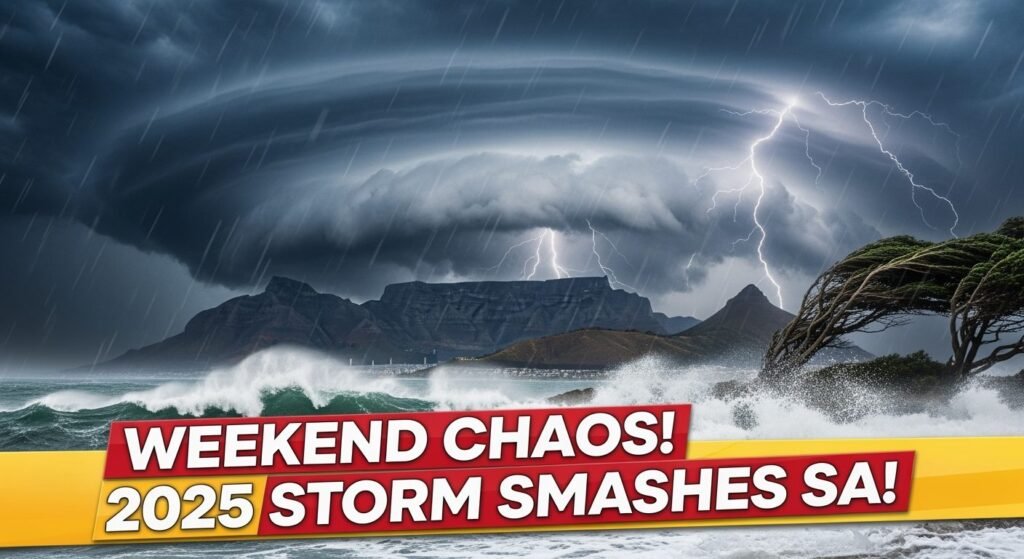Weekend Storm Alert: I’ve been tracking a significant weather system that’s heading our way, and I need to warn you about the September 2025 weekend storm alert that meteorologists are predicting will bring heavy winds and rain to damage several areas across the coastal and inland regions. The National Weather Service has issued urgent warnings for what could be one of the most severe weather events of the season. With wind speeds potentially reaching 70 mph and rainfall accumulations of up to 8 inches in some locations, this isn’t your typical autumn storm. Are you prepared for what might be coming your way?

What Areas Will Be Most Affected
The September 2025 weekend storm alert specifically targets the eastern seaboard, with coastal communities from North Carolina up through Maine facing the highest risk of damage. Inland areas, particularly those in low-lying regions or near rivers in Pennsylvania, New York, and Vermont, should also prepare for potential flooding. Metropolitan areas including Boston, New York City, and Philadelphia are expected to experience significant transportation disruptions and possible power outages as the storm system moves through.
Mountain regions aren’t entirely safe either, with forecasters warning about potential landslides in areas that have already experienced higher-than-average rainfall this season. The combination of saturated ground and powerful winds creates particularly dangerous conditions for hillside communities. Emergency management officials have already begun coordinating response efforts across state lines to ensure resources can be deployed quickly.
When To Expect The Storm’s Impact
According to the latest meteorological models, the storm system will begin affecting southern coastal areas by Friday evening, September 12, 2025. The peak intensity is expected throughout Saturday, with conditions gradually improving by late Sunday afternoon. However, the aftermath of flooding and wind damage may continue to impact communities well into the following week. Transportation hubs are already announcing potential closures, with several major airlines offering fee waivers for flight changes during the affected period.
The timing of this weekend storm alert is particularly concerning as it coincides with several major outdoor events planned across the region, including festivals and sporting events that typically draw large crowds. Emergency management officials are urging event organizers to closely monitor forecasts and be prepared to make cancellation decisions with adequate notice to prevent putting attendees at risk.
How To Prepare For The Storm
With the September 2025 weekend storm alert now issued, there are several critical steps you should take to protect yourself, your family, and your property. Start by securing outdoor furniture, toys, and decorations that could become dangerous projectiles in high winds. Check your emergency supplies, ensuring you have adequate food, water, medications, and batteries to last at least 72 hours without power or the ability to leave your home.
- Create an emergency communication plan with family members
- Charge all electronic devices before the storm arrives
- Clear gutters and drains to prevent water backup
- Fill your vehicle’s gas tank and consider having cash on hand
If you live in a flood-prone area, consider moving valuable items to higher floors and know your evacuation route. Remember that flooding can occur rapidly, sometimes with little warning, so don’t wait until conditions become dangerous to take action.
 Youth Grant September 2025 R12,500 – Full Guide Released for Application Process Across SA
Youth Grant September 2025 R12,500 – Full Guide Released for Application Process Across SA
Why This Storm Is Particularly Dangerous
This isn’t just another seasonal weather event. The September 2025 weekend storm alert has meteorologists particularly concerned due to several aggravating factors. First, the storm system is moving slowly, which means prolonged exposure to heavy rainfall and sustained winds for affected areas. Second, it’s following an already wet pattern that has left ground saturated in many regions, increasing flood risk significantly. Third, the timing coincides with astronomical high tides along the coast, creating the potential for severe coastal flooding and erosion.
Climate scientists note that the intensity of these types of storms has been increasing in recent years, consistent with climate change predictions. The warmer ocean temperatures provide additional energy to fuel storm systems, while rising sea levels amplify the impact of storm surge in coastal communities. These factors combine to make what might have been a moderate storm system a decade ago into a potentially life-threatening event today.
Recent Historical Comparison
The approaching storm system bears striking similarities to the devastating coastal storm of October 2023, which caused over $3 billion in damage across five states. During that event, more than 1.2 million households lost power, some for up to two weeks, and emergency responders conducted over 500 water rescues. The lessons learned from that disaster have informed many of the current preparation recommendations, particularly regarding early evacuation of flood-prone areas and the importance of having backup power sources for essential medical equipment.



